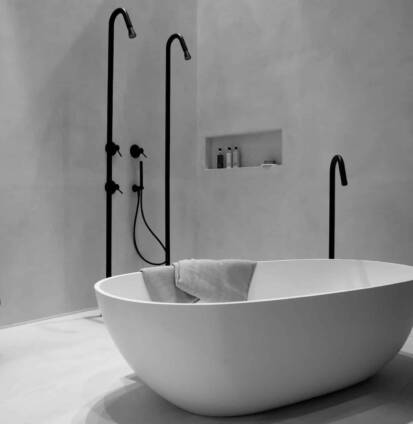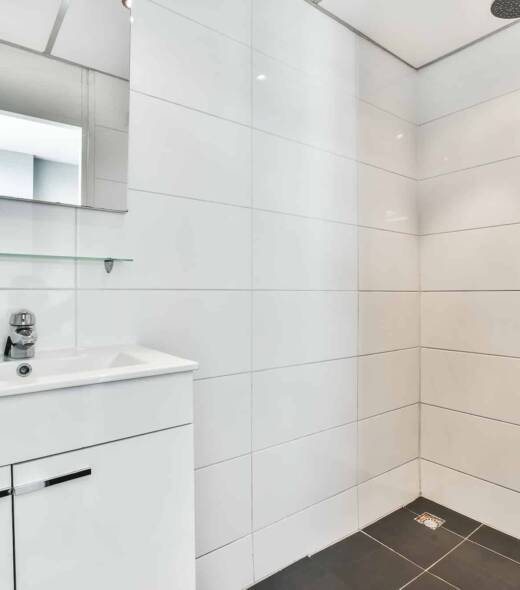Find the answers to your questions
We’ve compiled a list of frequently asked questions to address common inquiries and provide valuable insights into our services. If you have any additional questions or need further clarification, please don’t hesitate to contact us. We’re here to help you every step of the way.
Frequently Asked Questions
Welcome to our FAQ page!
Our goal is to provide you with clear and concise information, helping you make an informed decision about restoring your bathtubs, sinks, showers, tile walls, countertops, and tile floors. We’ve compiled a list of frequently asked questions to address common inquiries and provide valuable insights into our services. If you have any additional questions or need further clarification, please don’t hesitate to contact us. We’re here to help you every step of the way.


What is refinishing and reglazing?
Refinishing and reglazing are processes used to restore surfaces, typically bathtubs, sinks, and tiles, to a like-new condition by repairing damages, improving the appearance, and sealing the surface
What is the difference between refinishing and reglazing?
Refinishing and reglazing are similar processes used to restore and renew the appearance of surfaces, such as bathtubs, sinks, and tiles. Although the terms are sometimes used interchangeably, there are differences between the two:
Refinishing:
- Involves cleaning and repairing the surface, followed by sanding it to create a smooth finish.
- A primer is applied, and then several coats of a durable finish (often epoxy or urethane-based) are applied.
- The surface is buffed and polished to achieve a glossy, like-new appearance.
- Refinishing is typically used for surfaces made of porcelain, fiberglass, acrylic, and cultured marble.
Reglazing:
- Entails removing the old glaze or surface coating, followed by repairing any damages to the underlying material.
- A bonding agent is applied to help the new glaze adhere to the surface.
- A new glaze (often a ceramic or porcelain-based material) is sprayed onto the surface.
- The surface is allowed to cure, resulting in a hard, glossy finish that resembles the original glaze.
- Reglazing is most commonly used for porcelain and ceramic surfaces, such as bathtubs and tiles.
Both processes can significantly improve the appearance and durability of a surface, but the choice between refinishing and reglazing depends on the material and desired outcome. A professional can help you determine which process is best for your specific situation.
How does the refinishing process work?
The refinishing process involves cleaning the surface, repairing damages, sanding it, applying a primer, and then applying several coats of a durable finish. The surface is then buffed and polished.
How does the reglazing process work?
Reglazing involves removing the old glaze, repairing damages, applying a bonding agent, and then spraying on a new glaze. The surface is then allowed to cure.
Is refinishing or reglazing the same as replacing?
No, they are cost-effective alternatives to full replacement.
Can chips and cracks be repaired during refinishing or reglazing?
Yes, most chips, cracks, and other damages can be repaired during the process.
How do I care for my refinished or reglazed surface?
Avoid using abrasive cleaners, maintain a clean surface, and address any damages promptly.
How long does refinishing take?
Refinishing typically takes 4-6 hours, but curing can take up to 48 hours.
How long does reglazing take?
Reglazing usually takes 2-4 hours, but curing can take up to 72 hours.
What materials can be refinished or reglazed?
Bathtubs, sinks, tiles, and countertops made of porcelain, fiberglass, acrylic, and cultured marble can be refinished or reglazed.
How long does a refinished or reglazed surface last?
With proper care, a refinished and reglazed surface can last 7-10 years.
Can I refinish or reglaze my bathtub myself?
DIY refinishing or reglazing is possible, but professional services yield better results and warranties.
Can I use a bathmat on my refinished or reglazed surface?
Yes, but use a non-suction cup bathmat to avoid damaging the surface.
How soon can I use my bathtub or sink after refinishing or reglazing?
Wait at least 48 hours after refinishing and reglazing before using the surface.


